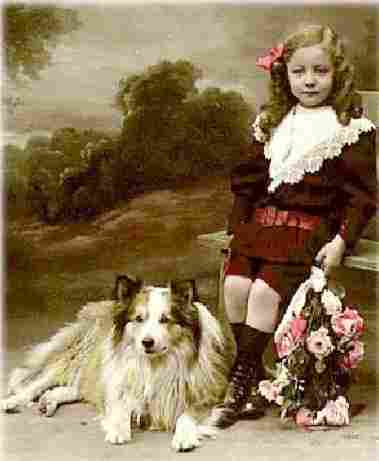
Figure 1.--This French boy wears a fancy maroon velvet sailor suit with lace-trimmed sailor styling. His tunic suit has kneepants rather than knicker pants that were more common in America. |

|
We notice French boys wearing tunics in the early 19th century, but have only limited information at this time on these tunics. We do not know much about the styles are how prevalent they were. As these tunics were worn before the invention of photography, there is no photographic record. We have many more images of French boys wearing tunics in the early 20th century. This does appear to have been a popular style and widely worn. For these tunics there is a rich photographic record of these tunics.
We have very little information about early 19th century smocks and the styles. We have much more information about the tunics that were worn at the turn of the 20th century. Tunic suits were very popular in France during the early 20th century. Theese tunics were mase in different styles. Sailor styles appear to haver been the most popular, but they were done with a wide range of detailing and stylistic features. Some do not look at all like sailor outfits, at least at first glance. We also notice Russian blouses.
French boys wore a variety of garments with tunic suits. We have begun to collect some information on these different garments. Most of the information we have is from the turn-of-the 20th century. We are less sure about the early 19th century. We have some infoirmation on headwear, pants, hosiery, and shoes. We have only limited information at this time, but are gradually acquiring information to develop this topic. We note boys wearing tunics wearing a variety of headwear. One popular style was sailor headwear. Many tunics at the turn-of-the 20th century were made with sailior styling. Sailor headwear, both broad-brimmed hats and sailor caps were a popular choice to wear with tunics, especially the sailor-styled tunics. French boys wore a variety of pants with tunics. In the early- and mid-19th century it was long pants. Here we do not have mucghh photographic ecidence. Rphiotography was only invednted in 1839. There are drawings and poaintings. Often this meant long poants done in white or other colors and material that did not mobth the tunic. Gradually after mid-century we see boys wearing shortened length pants, both knee pants and bloomer knickers. And these shoirtened-lenth noants usually did match the tunic. French boys appear to have mostly worn their tunic suits with socks, mostly three-quarter length socks. We have not noted many boys wearing long stockings in available images. Lomg stockings were almost univerasl in America. Long stockinfs were not unknown in france, but the photographic record suggesta that socks were mich more commin in France.
Most French boys wearing tunic suits appear to be wearing high-top lace up shoes. A few boys wear strap shoes, but this appears to have been more common in the 1920s. Available 19th Century images do show French boys wearing strap shoes, but mostly boys who had not yet been breeched and are still wearing dresses.
Tunic suits appear to have been most commonly worn by boys from about 4 to 8 years of age.
This is based oprimarily on the available images, I do not yet have actual details from
clothing advertisements.
I do not have precise details on when tunic suits first appeared in France. They were being worn in the mid-19th century. How much earlier they appeared I do not know, but it was presumably early in the 19th century. We see the Hugo boys wearing Tunics about 1835. HBC has developed information on one 1850s tunic suit that appeared in a Belgian fashion magazine. (We mention it here because we still have limited French 19th century material and believe Belgian boys' fashions to be generally similar to French fashions.) They clearly were one of the most popular children's styles by the turn of the century. They were worn throughout the 1900s and early 1910s, but declined in popularity during World War I (1914-18). I'm not sure why this was, but perhaps such fashions which accentuated childish inosence were just not in keeping
with the horrors of the war. The style was little seen by the 1920s, especially by mid-decade.
We notice French boys in the 19th and early 20th century wore tunic of various kinds to school. We do not, however, have a good idea as to how prevalent they were nor how popular. We have very little information on these tunics at this time. Our French 19th century archive is very small which severely limits our primary source of information. We hope to expand our understanding as our archive grows. We note boys wearing tunics with belts over them. The belt worn this way was entirely decorative, serving no practical purpose. We do note French boys wearing tunics to school in the early-20th century. Tunics were also common in America at this time, but were not as commonly worn to school.
Tunic suits were worn with a wide variety of hair styles. Short hair was not very common
for boys in tunuic suits, unklike America where it was. Longish over the ears hair and shoulder length hair was the most common. Some boys with long hair had ringlet curls, but
long uncurrled hair was more common. Many boys are pictured with hair bows. This was
especially true of the post cards made for mass sale. I'm less true how common such
hair bows were with the general public.
Navigate the Historic Boys' Clothing Web Site:
[Return to the Main national tunic page]
[Return to the Main tunic page]
[Return to the Main French garment page]
[Introduction]
[Activities]
[Biographies]
[Chronology]
[Clothing styles]
[Countries]
[Topics]
[Bibliographies]
[Contributions]
[FAQs]
[Glossaries]
[Images]
[Links]
[Registration]
[Tools]
[Boys' Clothing Home]
